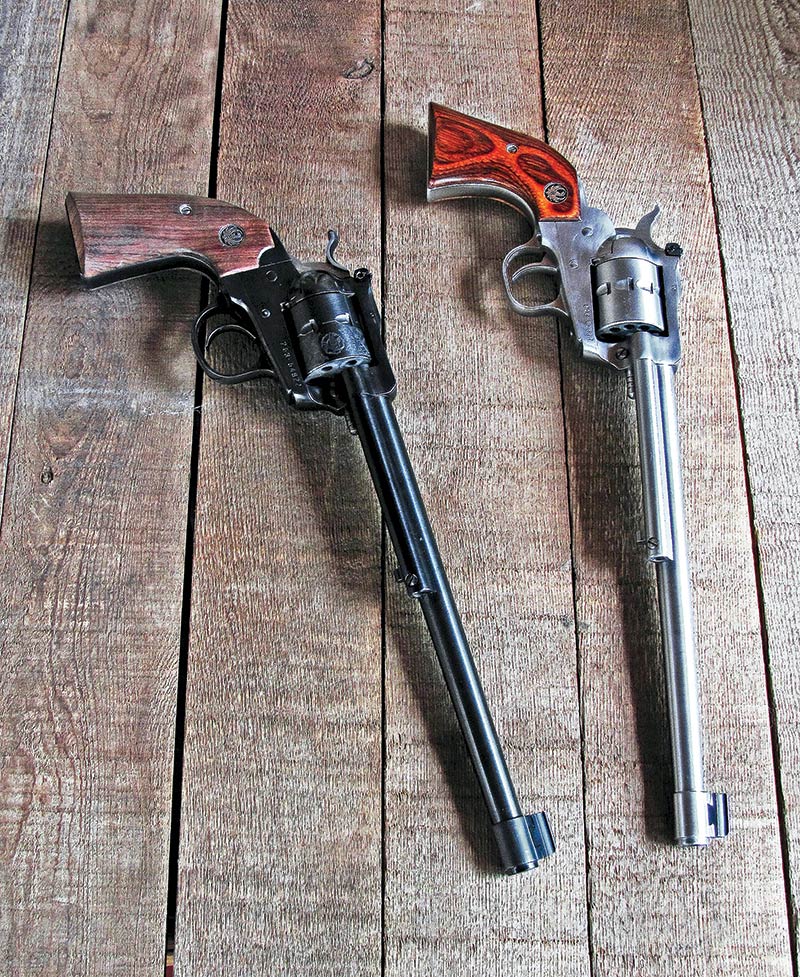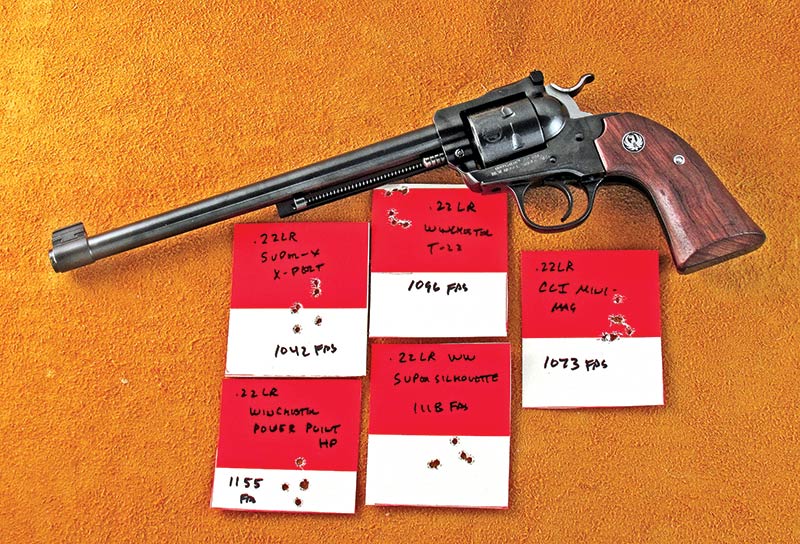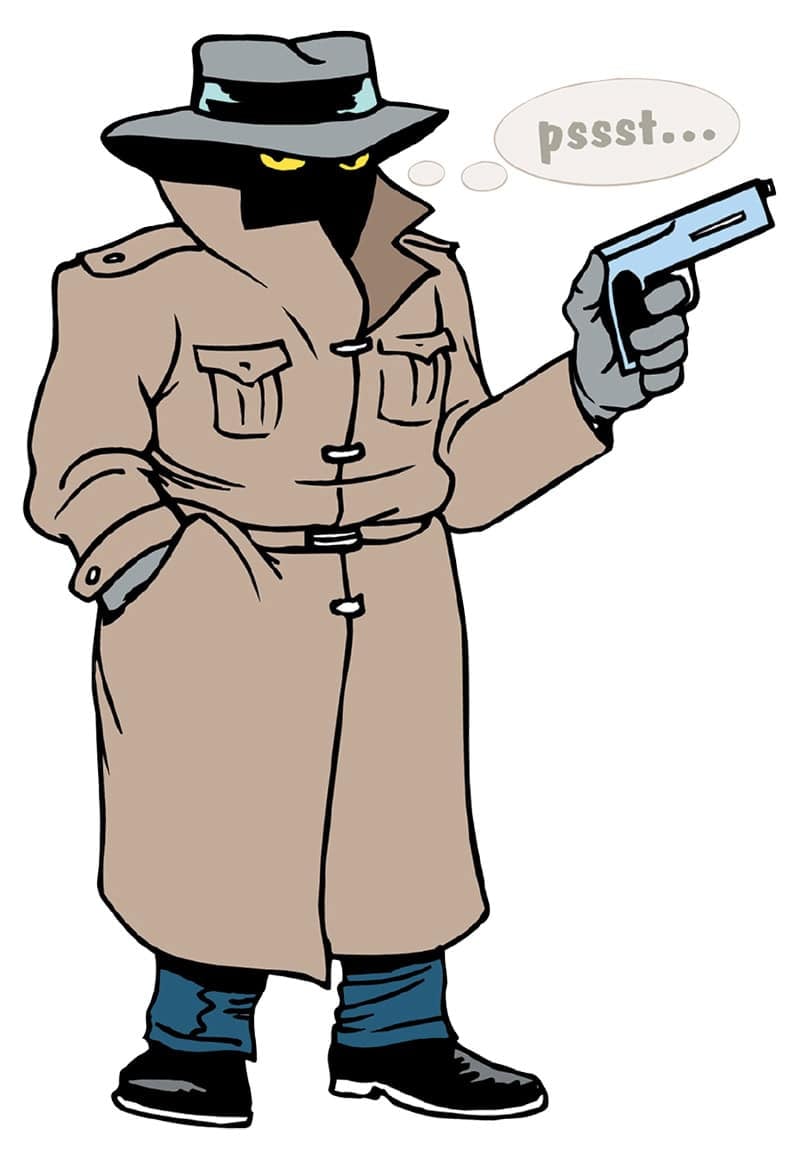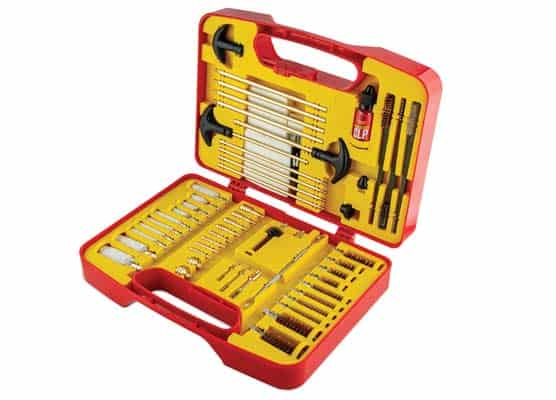Rifle-Barreled Ruger Sixguns?
Someday. We all have a list of things we are going to do someday. Sometimes the list is short and sometimes the list is long. Sometimes the “somedays” are taken care of; sometimes we just never get to them. One of my somedays for several years has been to have a Ruger 10/22 .22 rifle barrel fitted to a Single-Six.
The problems holding me back were twofold. Firstly, I wasn’t sure it would actually work, and secondly I was reluctant to change any of my current Single-Sixes as they are all great shooters. The answer came when I looked in the case at my local gun shop, Buckhorn, and saw a used Ruger Bisley Model Single-Six at a very reasonable price. I was careful not to shoot it first as if it had been superbly accurate, I would’ve been reluctant to change it.
One factor pushing me to doing this project was the fact the sample gun had a 6 1/2″ barrel which to me just doesn’t seem to fit on a single-action sixgun. The original Colt Single Action Army was a 7 1/2″-barreled .45 Cavalry Model and later versions were offered with the 5 1/2″ Artillery Model length and then the Civilian Model which had a 4 3/4″ barrel.
Jumping In
Once I had purchased the source gun, I zipped back to the house to pick up a 10/22 barrel and then hurried back to discuss the project with the new gunsmith at Buckhorn. Keith is fresh out of gunsmithing school, so I had yet to figure out just what he could do. As we discussed the project, I quickly determined he knew what he was doing and there would be no problems.
The Ruger 10/22 standard barrel is tapered and the front sight is in a dovetail on a barrel band. We would use the front portion of the barrel cut to a 91/2″ length, rethreaded and fitted to the .22 Bisley Model. The Bisley has a standard Ruger square notch adjustable rear sight with the notch wide enough to accommodate the Ruger standard front sight found on most Single-Sixes and Blackhawks. However, the 10/22 barrel’s front sight is a small gold bead on a very narrow post. I doubted the combination would work, but since the rifle’s front sight is in a dovetail it would be easy to install a different front sight if needed.
Several days later I got a call from Buckhorn to come and pick up my “new” Bisley Model .22. Keith did an excellent job rethreading and setting the barrel with a minimum barrel/cylinder gap. There are many words in our language which are overused and one of those is “cool.” In this case it isn’t; this is one of the coolest sixguns I’ve ever seen! The long, tapered cut-down barrel of the 10/22 really does look perfect on the Bisley Model. In fact, it looks so good I really wondered if it actually could possibly shoot as good as it looked. I wasted no time trying it out.
Where It Counts
The first thing I noticed on the range was how small the tiny little gold bead looked in the square notch rear sight. I thought this would have to be changed, but I really concentrated to make sure the bead was centered in the square notch and fired my first shot. What a grand surprise I received. It was dead on for elevation and I only had to move the rear sight two clicks clockwise to center the groups.
I’m not one who believes much in luck, but my goodness how lucky was this? Not only were the sights so close to begin with, I was able to shoot exceptionally tight groups. In testing I went with 16 different brands/configurations of .22 ammunition, and all the groups together averaged less than 1″ for five shots at 20 yards. The most accurate loads turned out to be from CCI with their Mini-Mag and their Mini-Mag HPs, both grouping at 1/2″ with muzzle velocities of 1,075 fps and 1,195 fps, respectively. Aguilas were right behind these at 5/8″ and 1,112 fps while Federal Lightnings (1,125 fps) and Winchester T22s (1,096 fps) came in at 3/4″. The largest groups recorded with any ammunition measured 13/8″. This is excellent performance.
The Next Step
In fact, I was so pleased I decided I could not just stop at one. All I needed was another base gun. You probably won’t find it hard to believe after the results I got with the Bisley I picked a gun I already had with a 61/2″ barrel. This time I went with a stainless-steel Single-Ten. Back I went to Buckhorn to perform the same thing with this .22. Keith was so excited about how well the first turned out he wasted little time coming up with the next version.
While the custom-barreled Single-Six shot so very well, I knew this Single-Ten was at best an average shooter and did not expect really good results. It is also harder to concentrate for 10 versus six shots. I soon found out I was wrong, as I tested the completed gun with the same 16 different .22 loads and was most pleasantly surprised. This time the largest group was only 11/4″ and it proved to be much more consistent in group size than the first conversion. Six groups measured at 11/8″ and the 11/4″ size groups numbered five. That is 11 out of the 16 groups fired in this range. The most accurate at 3/4″ proved once again to come from CCI with their Mini-Mag HP at 1,275 fps and their standard velocity at 980 fps also shot very tight groups.
Sometimes our “somedays” not only arrive but actually work out especially well. Either one of these long-barreled .22’s carry well in my Chevy 4×4 pickup and they beg the question, “Who needs a .22 rifle?”
For more info: www.ruger.com










